Schnoodle Dog Breed: The Incredibly Intelligent and Friendly Pet
PETSIDI – The Schnoodle is a popular hybrid dog breed resulting from crossing a poodle with a schnauzer. Schnoodles make wonderful companion dogs and family pets due to their fun-loving temperament, intelligence, and hypoallergenic coats. This crossbreed combines the best traits from both parental breeds.
Origin and History
Schnoodles were first developed in the 1980s during the rise of designer dog breeding. Breeders aimed to create a new dog with the poodle’s intelligence and low-shedding coat and the schnauzer’s loyalty and spunk.
There are no records pinpointing the exact origin of Schnoodles. Their creation mirrors that of other poodle crosses like maltipoos, cockapoos, and labradoodles.
Crossbreeding became popular as more people desired hypoallergenic hybrids that made better companions than purebreds. Schnoodles fit the bill as the ideal nonshedding yet lively family dog.
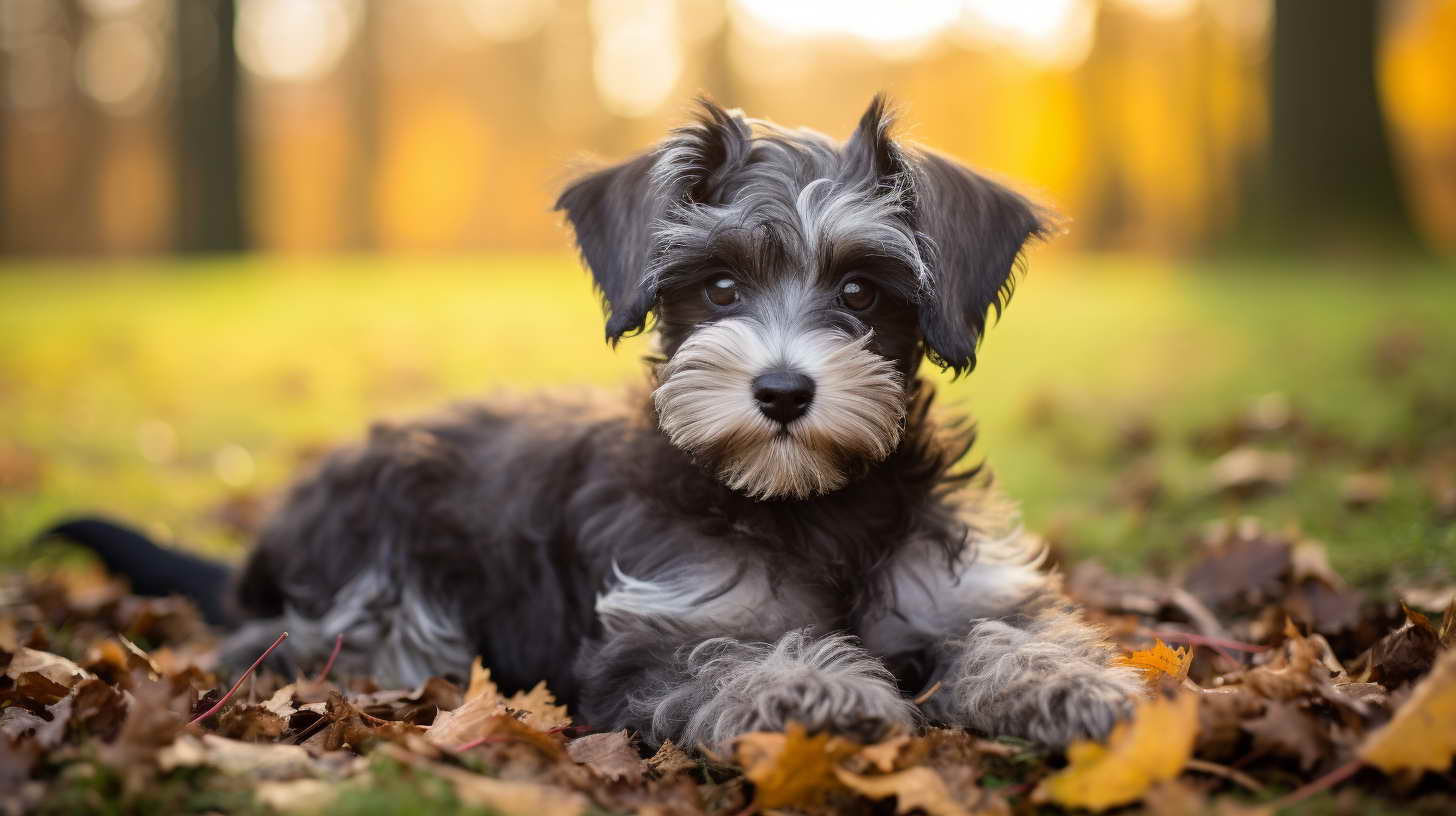
Schnoodle Appearance
Schnoodles can vary greatly in size, coat, and color since they are a crossbreed. Their appearance depends on whether they take after the schnauzer or poodle parent more.
Size
Schnoodles typically range from 10-75 pounds. There are three size classifications:
- Toy Schnoodles – 10-15 pounds
- Miniature Schnoodles – 15-35 pounds
- Standard Schnoodles – 35-75 pounds
Toy and miniature Schnoodles are more common since they make better apartment and city dogs. Standards offer more of a robust, sporty presence.
Coat and Color
Schnoodles can have a wavy, curly, or straight coat texture. Their coats are always soft and hypoallergenic like the poodle.
Coat colors include:
- Black
- White
- Brown
- Gray
- Apricot
- Red
- Sable
- Phantom
- Parti (spotted)
Solid colors or a mix are possible. Multicolored coats are attractive and unique.
Facial Features
Schnoodles tend to have a round head and muzzle like a schnauzer. Their expressive eyes are often dark brown or black. Floppy, folded ears are also common.
Their fuzzy bearded snout resembles a schnauzer. A shorter muzzle indicates more poodle lineage.

Schnoodle Temperament
Schnoodles are highly energetic, social, and affectionate. Their lovable personality makes them ideal companion dogs.
They are extremely loyal to their owners and love being involved in family activities. Schnoodles form very strong bonds with all members of the household.
Like poodles and schnauzers, schnoodles are highly intelligent. They thrive when given ample mental stimulation. Without it, they may resort to nuisance barking or destructive chewing.
Schnoodles inherit the poodle’s eagerness to please. This makes them highly trainable dogs. They enjoy learning new tricks and commands.
With early socialization, Schnoodles get along well with children, strangers, and other pets. They are friendly and rarely aggressive.
Their spirited, spunky attitude comes from the schnauzer. Schnoodles are great watchdogs who will alert and bark at anything suspicious.
Overall, these crossbreeds combine the best personality traits from both parental breeds.
Schnoodle Grooming and Care
Schnoodles are considered low-maintenance dogs despite their thick coats. Their hair doesn’t shed heavily like other breeds.
To prevent matting, Schnoodles need:
- Daily brushing
- Monthly bathing
- Regular grooming trips for clips and trims
Occasional haircuts are needed to manage their continuously growing fur. Many owners opt for cute teddy bear cuts. Professional grooming every 6-8 weeks reduces shedding.
Other care needs include:
- Nail trimming
- Ear cleaning
- Teeth brushing
A well-balanced diet with omega fatty acids enhances their skin and coat health.
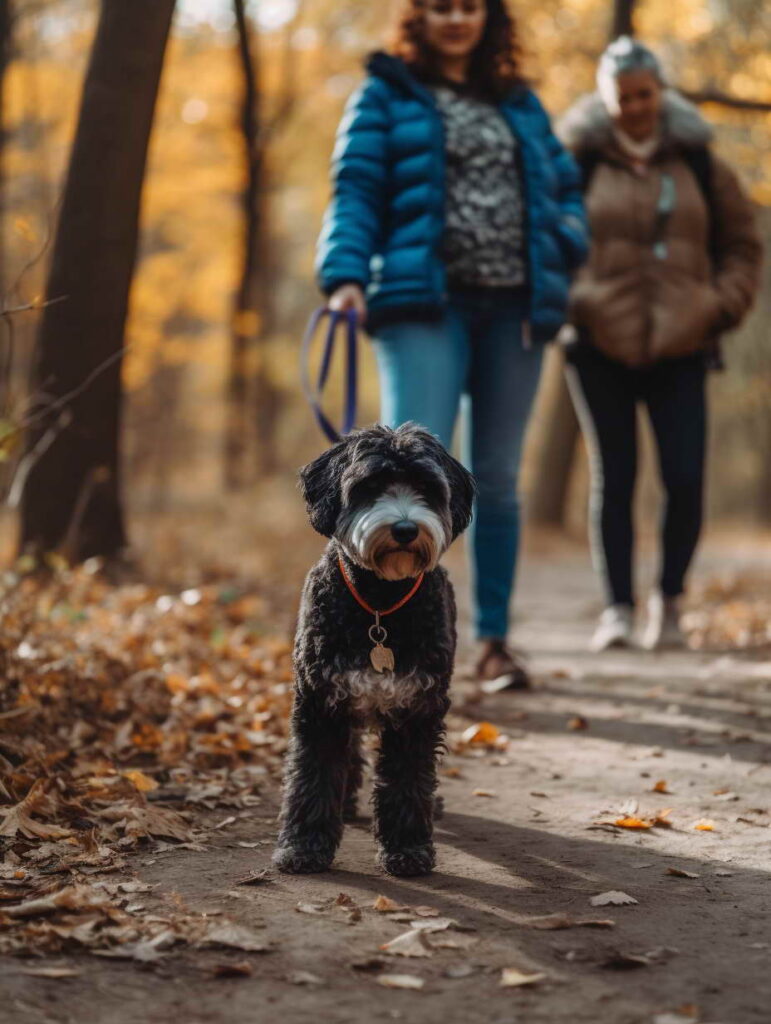
Schnoodle Training
Schnoodles are highly intelligent and respond well to training. Early socialization and obedience classes are recommended.
Their eagerness to please makes them fast learners. Positive reinforcement like treats and praise works best.
Here are some important training tips:
- Start training early on as a puppy
- Use reward-based methods
- Keep sessions brief and engaging
- Teach basic obedience cues like sit, stay, and come
- Socialize them to prevent shyness or anxiety
- Curb nuisance barking
- Prevent separation anxiety
- Discourage jumping up
- House training using crate training and schedules
Mental stimulation is equally important. Food puzzles, fetch, and trick training prevent boredom and destructive behaviors.
Schnoodle Health
Schnoodles are generally healthy dogs with a life expectancy of 10-15 years. Crossbreeding increases hybrid vigor and reduces the risk of inheriting genetic disorders.
Some common health issues to be aware of include:
- Eye Problems – progressive retinal atrophy, cataracts
- Luxating Patellas – dislocated kneecaps
- Obesity
- Hip Dysplasia
- Digestive Issues – bloating, diarrhea
- Diabetes
- Addison’s Disease
Reputable breeders screen for these conditions to produce healthy litters. Routine vet checks and bloodwork identify problems early on.
With proper care, exercise, and nutrition, Schnoodles remain energetic and lively into their senior years.
Is a Schnoodle the Right Dog For You?
Schnoodles thrive in active pet-friendly households. Consider if this lively, highly social breed suits your lifestyle.
Schnoodle Ownership Checklist:
- Can accommodate their high energy levels with plenty of exercise and playtime
- Willing to brush and groom them regularly
- Have time for training, socialization, and bonding
- Have space for their toys and belongings
- Can provide mental stimulation with training, games, and activities
- Happy to include them in family activities and outings
- Looking for an affectionate dog that loves kids, strangers, and other pets
- Want a fun-loving dog suited for city or apartment living
- Seek a smart, trainable dog eager to learn new things
- Need a hypoallergenic dog that doesn’t shed heavily
- Willing to invest time into proper care, grooming, training, and healthcare
If these traits match your lifestyle, a Schnoodle will make the perfect furry companion! Their lively, friendly nature and intelligence make them a top choice for both first-time and experienced dog owners.
Schnoodle Variations
There are a few popular schnoodle breed variations to consider:
The Giant Schnoodle
This larger Schnoodle results from breeding a standard poodle with a giant schnauzer parent. They can weigh 55-90 pounds.
Giant Schnoodles have more energy and require extra exercise. Their larger size makes them better suited for homes with yards rather than apartments.
The Mega Schnoodle
Some breeders use standard poodles and giant schnauzers to create mega Schnoodles over 90 pounds.
These gentle giants thrive in spacious country homes where they have plenty of room to roam and play.
The Mini Schnoodle
Mini Schnoodles weigh 10-20 pounds and result from toy poodle and miniature schnauzer pairings.
Their pint-sized stature makes them ideal urban dogs. But minis are still energetic and benefit from daily walks.
Finding a Healthy Schnoodle Puppy
It’s important to find an ethical, responsible Schnoodle breeder. Avoid pet stores or online ads selling these dogs.
The breeder should:
- Have parent dogs on-site
- Perform health tests on breeding dogs
- Provide vet records for the puppy
- Answer questions on the puppies’ upbringing
- Have a clean, spacious breeding facility
Reputable breeders focus on temperament and health over profit. Expect to pay $800-$2000 for a Schnoodle from such a breeder.
Bringing Home Your Schnoodle Puppy
The first few weeks with your new Schnoodle puppy are crucial for building a strong bond and starting training. Below are some tips to help the transition go smoothly:
Puppy-Proofing Your Home
Before your puppy arrives, be sure to thoroughly puppy-proof your home. Put away any items that could pose a hazard – things like electrical cords, toxic houseplants, and choking hazards. Lock up any chemicals, toxins, or medications out of paw’s reach.
Cover wires and block access to any unsafe areas. Remove any valuable items that could be chewed on. Install baby gates to restrict access if needed.
Setting Up Their Space
Setup an area just for your pup with:
- Sturdy crate with bedding
- Designated feeding station
- Water and food bowls
- Puppy pads for potty training
- Interactive chew toys
- Collar, leash, harness
The crate will be their safe sleeping space and aid in potty training. Place it near family areas so they don’t feel isolated.
Establishing a Routine
Puppies thrive on structure and consistency. Create a daily schedule for feeding, potty breaks, training, playtime, and naps.
Take them out first thing in the morning, after meals, after waking up, and before bed. Use the same potty training command words like “go potty.” Praise and treat when they go in the right spot.
Gradually increase the time between bathroom trips as their bladder control improves. Limit their space if they have indoor accidents. Confine them to their crate or a room with easy clean flooring when you can’t supervise.
Make sure children know how to properly pick up, handle, and play with the puppy to avoid injury. Never leave kids unsupervised with new pets. Have designated times where they can interact and play.
Socialization & Training
Socialization is imperative in the first few weeks to shape your puppy’s behavior around people, places, and other animals. Introduce them positively to new sights, sounds, smells, and experiences.
Sign up for puppy kindergarten for essential socialization with other dogs and people. Use reward-based training and keep lessons short, fun, and engaging. Practice basic obedience commands like sit, stay, and come.
Gently correct any unwanted nipping or jumping. Redirect their energy into appropriate toys. Handle and brush them frequently to get them used to grooming.
Providing Mental Stimulation
In addition to socialization and training, provide ways for your Schnoodle puppy to exercise their mind:
- Food puzzle toys
- New toys to investigate
- Hide-and-seek games with treats
- New smells and textures to experience
- Basic trick training like shake, spin, rollover
- Safe chew bones or frozen Kongs
Rotate toys to prevent boredom. Plan activities like fetching balls or learning new commands. Schnoodles thrive when challenged mentally.
With time, patience, and proper care during this initial period, your Schnoodle will adjust quickly to its new home and become a fun, well-mannered companion!
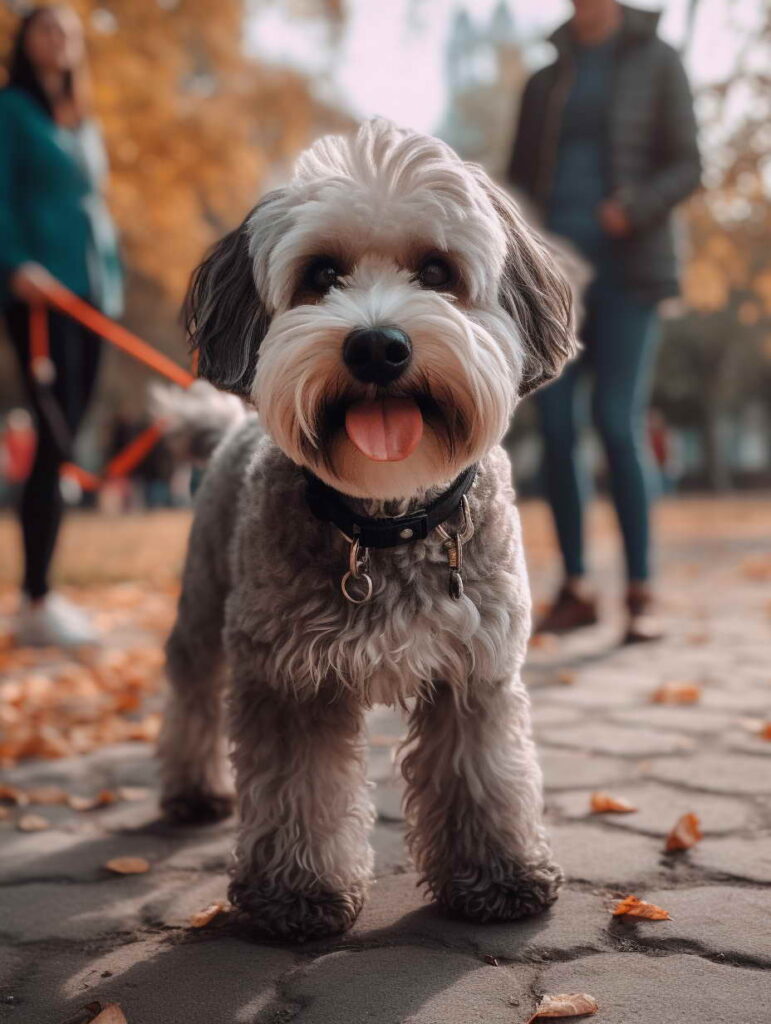
Common Schnoodle Questions
Here are answers to some frequently asked questions about Schnoodles:
Are Schnoodles good family dogs?
Yes! Schnoodles thrive when around their family. They are very affectionate, playful, and loyal. Proper socialization ensures they get along well with children too.
Do Schnoodles bark a lot?
Schnoodles may bark more than other breeds. Early training helps curb nuisance barking. They make excellent watchdogs and will alert and bark at anything suspicious.
Do Schnoodles shed?
Schnoodles are light shedders. Their poodle lineage gives them a hypoallergenic coat. Regular brushing and grooming minimize any shedding.
Are Schnoodles easy to train?
Yes, Schnoodles are highly intelligent and trainable. Their eagerness to please makes it easy to teach them commands, tricks, and manners. Positive reinforcement works best.
How much exercise does a Schnoodle need?
Schnoodles are energetic and require 30-60 minutes of exercise daily. This can include walks, playtime, hiking, or any activity that keeps them engaged and active.
What health problems do Schnoodles have?
Schnoodles are at risk for issues like eye disease, luxating patellas, diabetes, and joint dysplasia. Reputable breeders screen for these conditions. Proper care reduces the likelihood of illness.
Are Schnoodles hypoallergenic?
Schnoodles shed minimally and produce less dander. This makes them hypoallergenic and unlikely to trigger allergies. Regular grooming and bathing keep their coats clean and saliva contained.
Do Schnoodles make good apartment dogs?
Yes! Mini and toy schnoodles adapt well to apartment living. Just ensure they get their required exercise daily through walks or play. Have toys to prevent boredom or destructive chewing.
Are Schnoodles good with other pets?
With training and socialization, Schnoodles get along great with other pets like cats and dogs. Supervise initial interactions until they become comfortable. Their friendly nature helps them make friends.
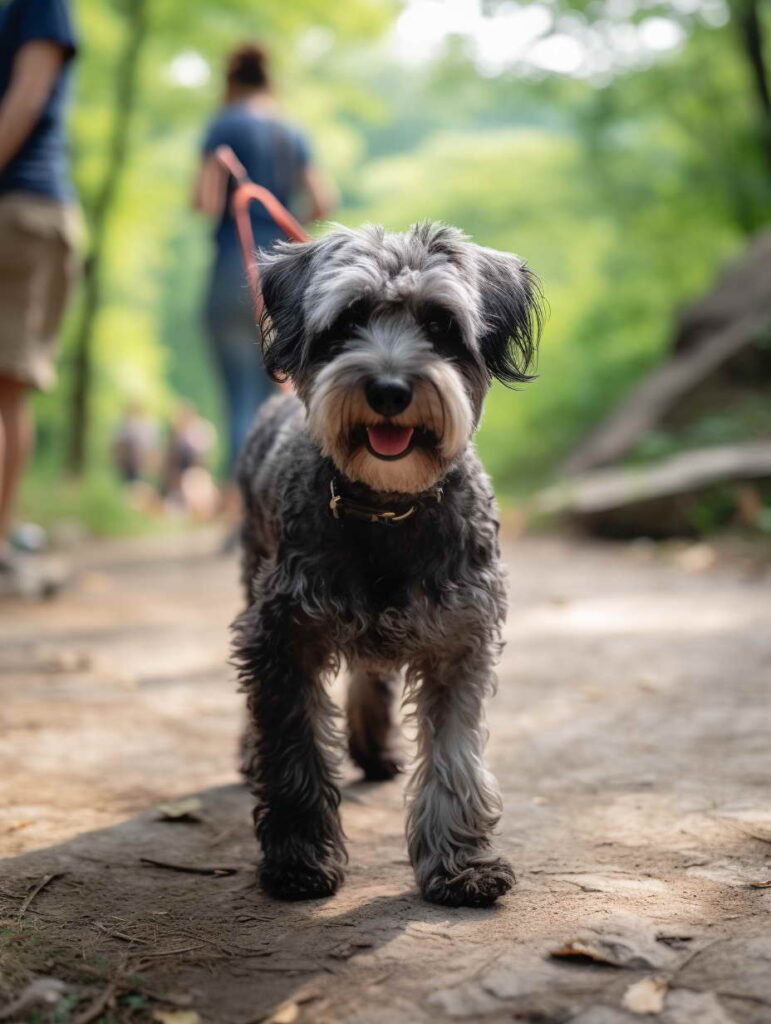
Final Thoughts on Schnoodles
For those seeking a fun-loving, lively hypoallergenic companion, the schnoodle has it all. They inherit the best qualities from their poodle and schnauzer lineage.
Schnoodles thrive on love and attention from their family. They are easy-going dogs who enjoy being involved in activities.
With training, Schnoodles become well-mannered canine citizens. Grooming keeps their coat under control. Proper healthcare ensures their long lifespan.
Schnoodles make ideal urban pets due to their moderate exercise needs and small-size options. Their intelligence also makes training them a breeze.
In short, it’s easy to see why Schnoodles rank so highly as both therapy dogs and family companions! Bring one of these spunky, affectionate crossbreeds home today for a lifetime of devotion and joy.

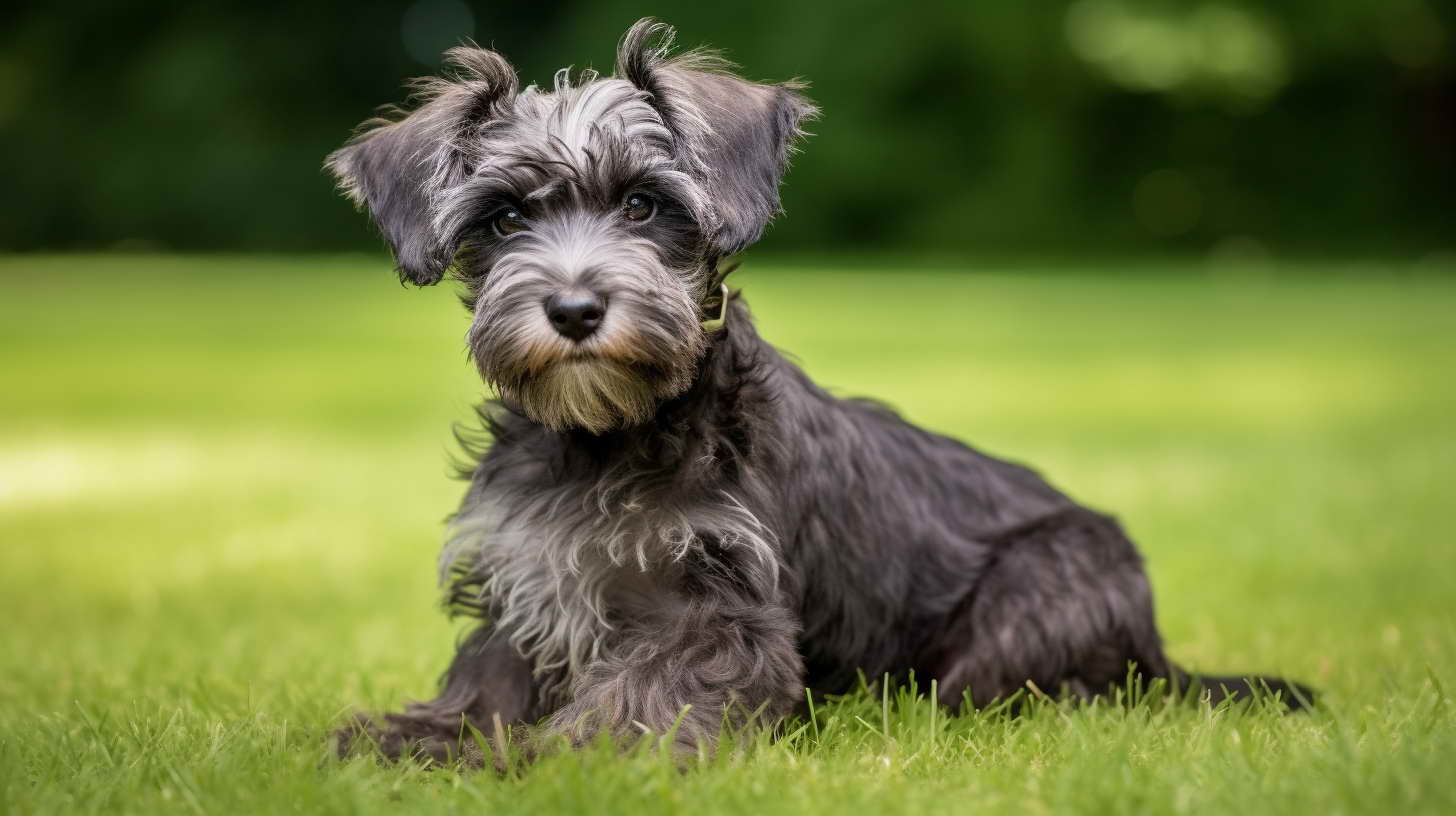
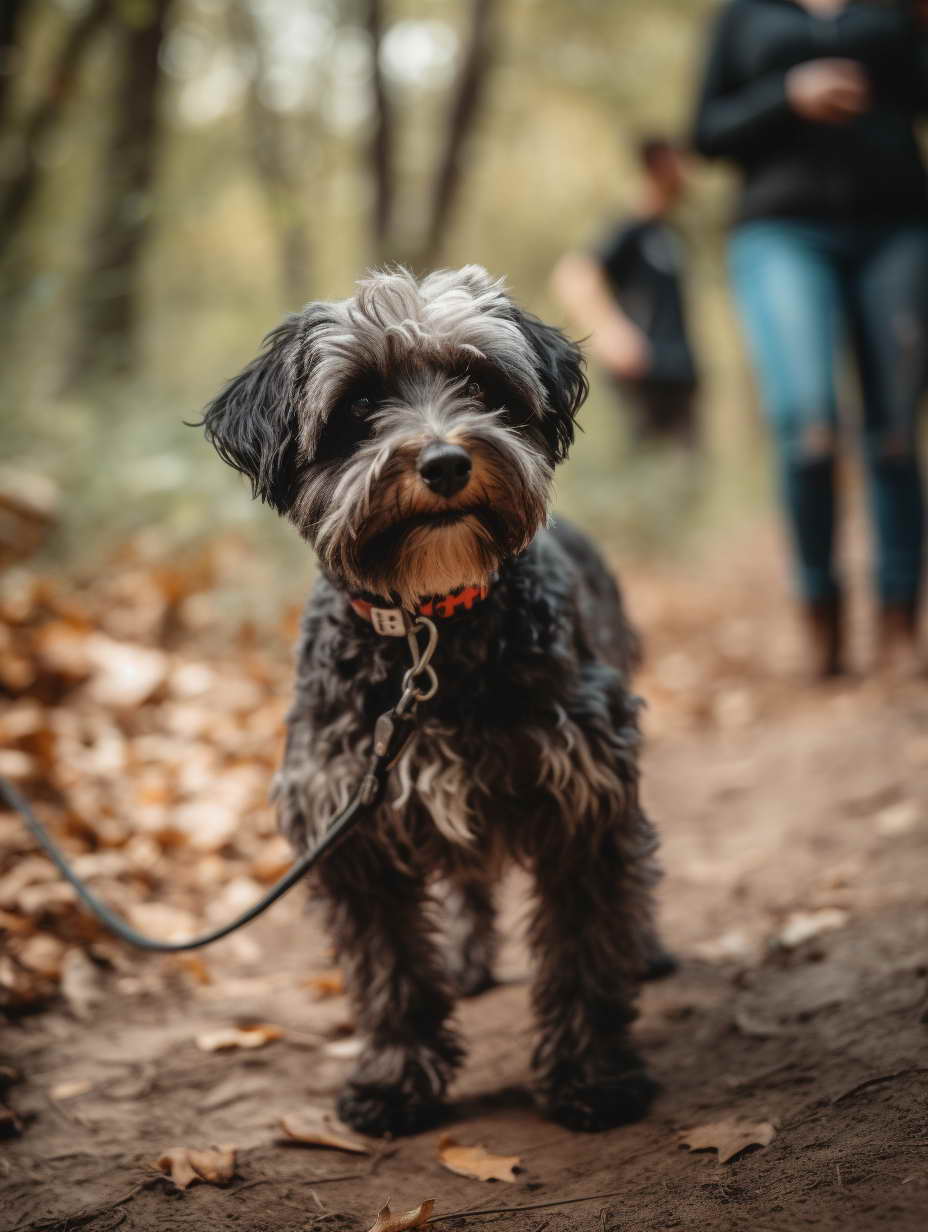
Leave a Reply